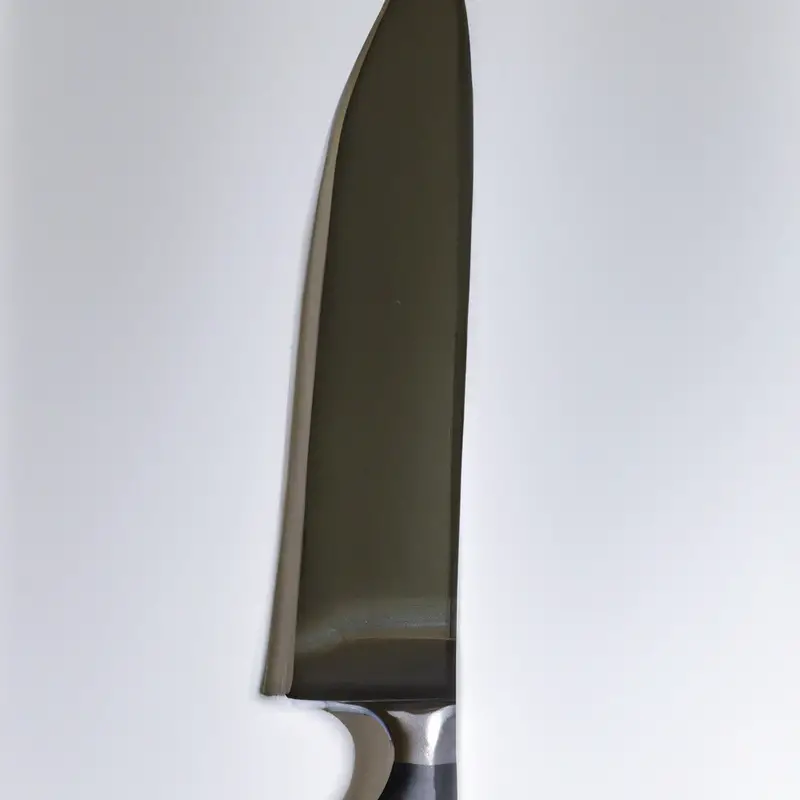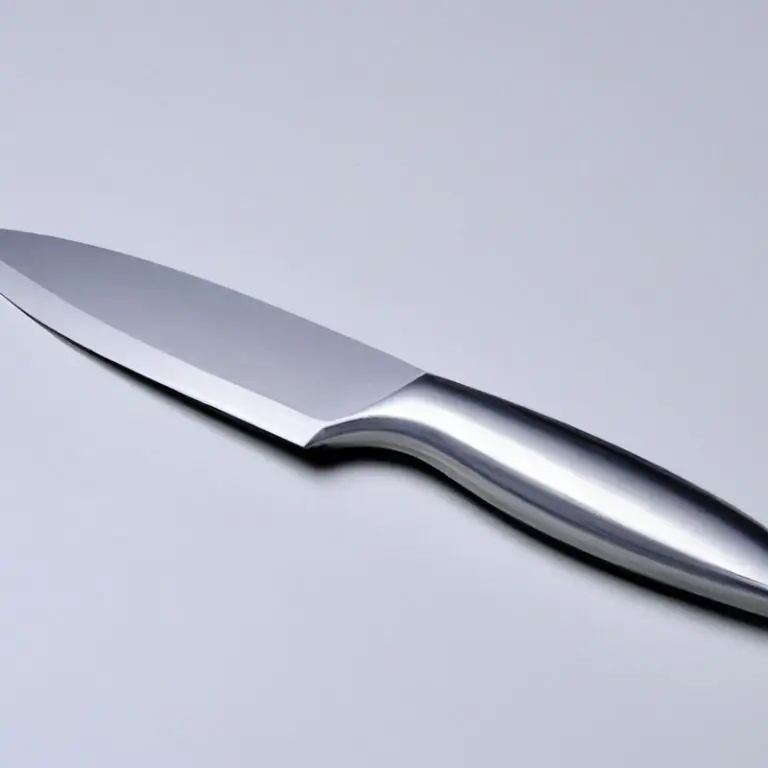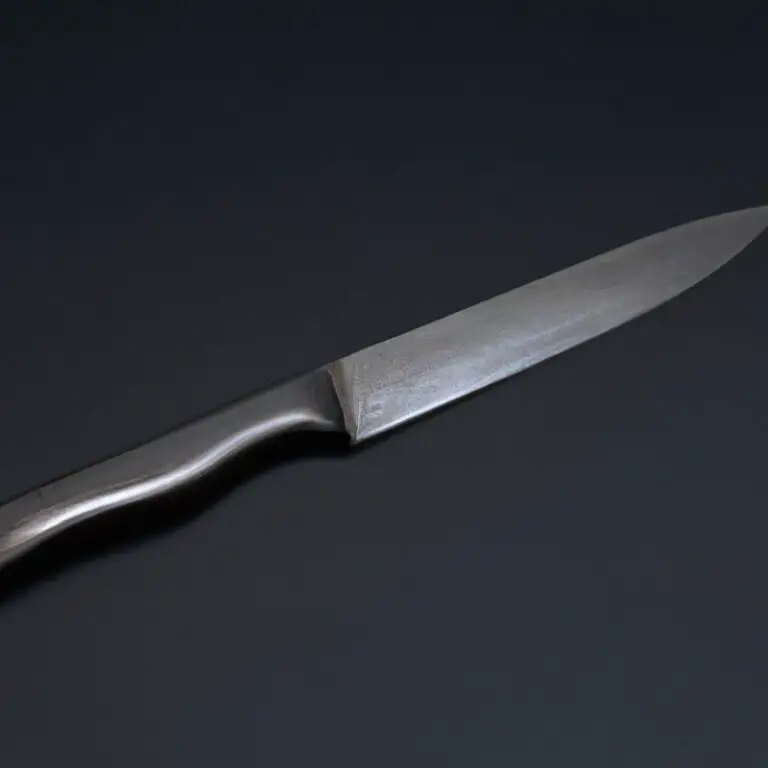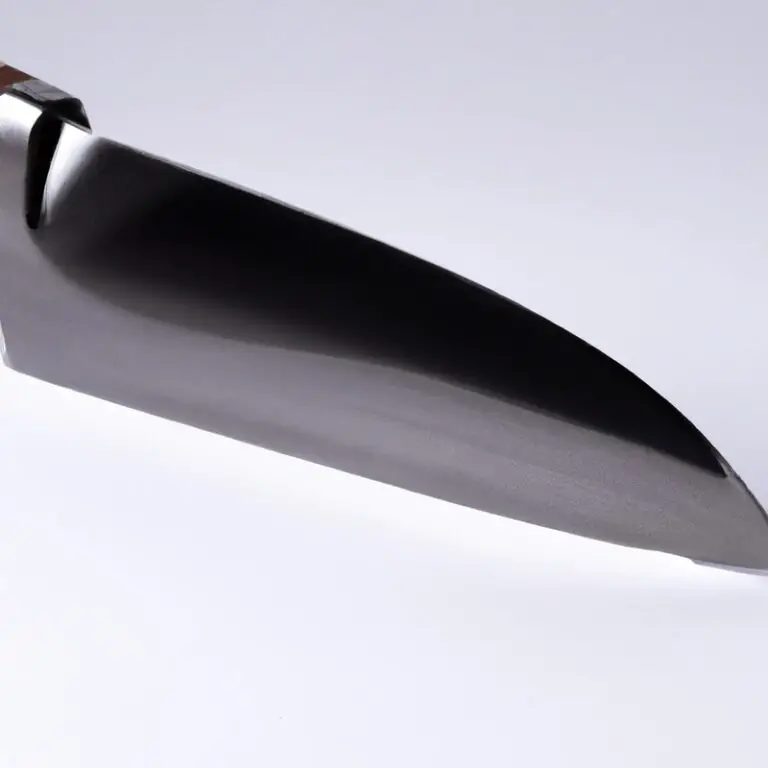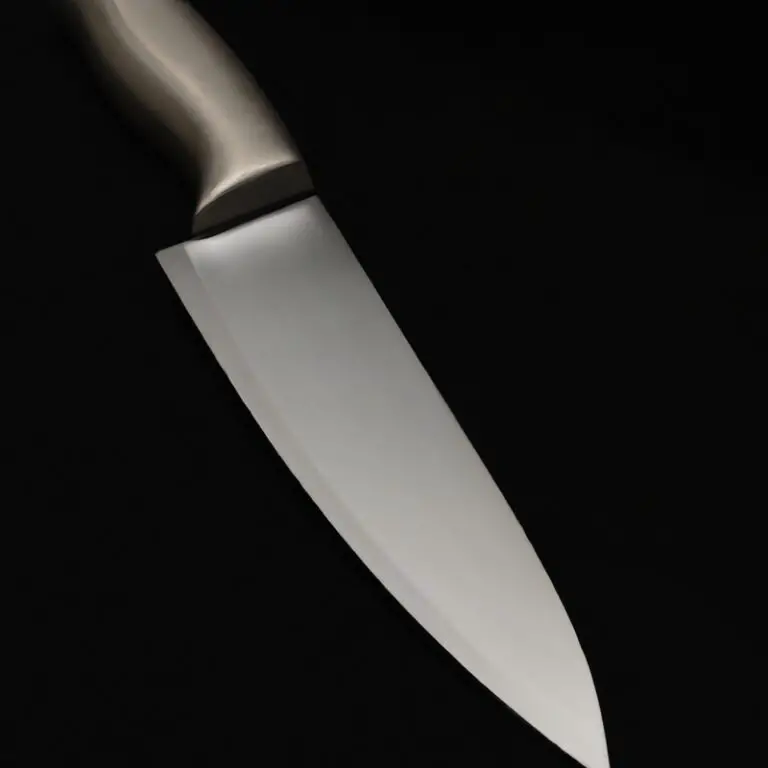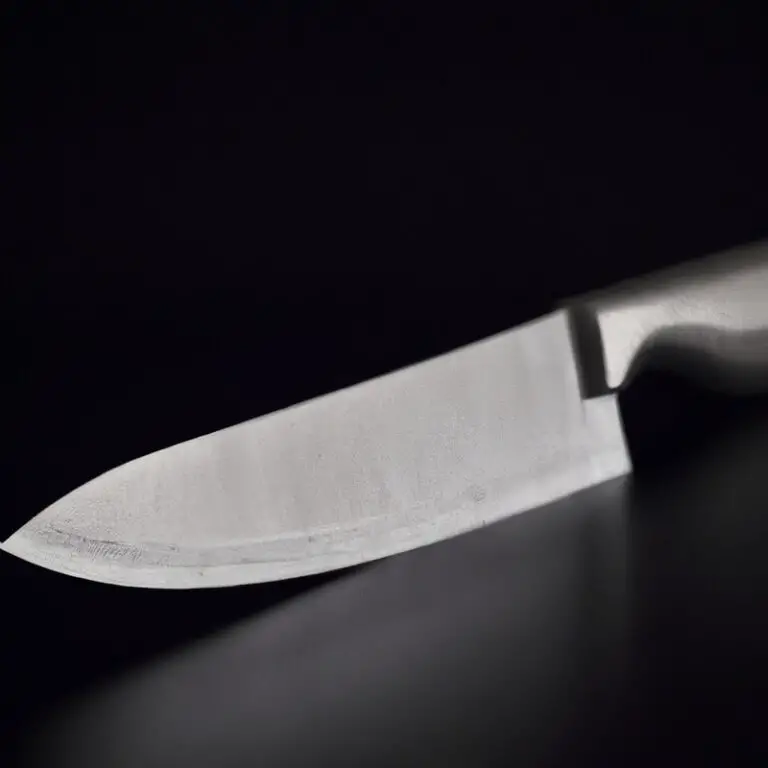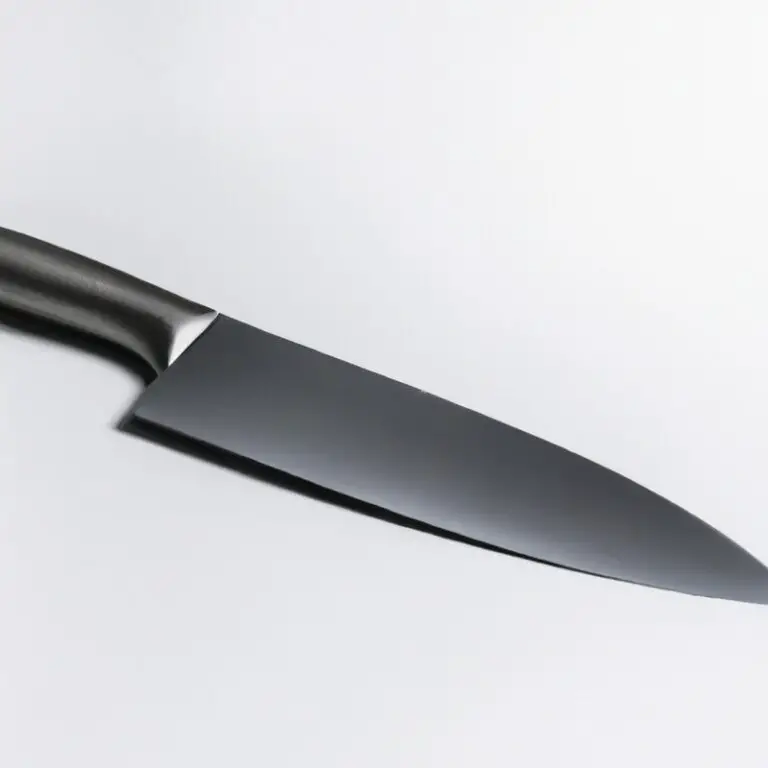How To Store a Santoku Knife Properly? – Tips!
Key Takeaways:
- Proper storage of a Santoku knife helps prolong its lifespan and maintains its sharpness for longer.
- Storing the knife in a block, sheath, or on a magnetic strip can protect the blade and prevent injuries.
- Avoid storing the knife in a kitchen drawer, as it can damage the blade or dull the edge.
- Regularly cleaning and drying the knife before storage can prevent rust and corrosion.
As a professional chef, I know that a Santoku knife is a prized possession in the kitchen. Its versatility and ability to slice through meats, vegetables, and fish with ease make it a favorite among cooks.
However, improper storage can lead to damage and deterioration of the blade, compromising its effectiveness over time.
In this article, I will share some practical tips on how to store a Santoku knife properly so that you can enjoy its performance for years to come. From understanding the importance of storage to using a knife block or roll, we will cover everything you need to know to keep your Santoku knife sharp and in perfect condition.
| Method | Advantages | Disadvantages | Cost |
| Hanging on a magnet | – Saves counter space – Keeps blade dry – Easy access |
– Can scratch blade – Risk of falling off – Needs a magnetic strip or rack |
$$ |
| Placing in a knife block | – Safe storage – Protects blade from damage – Different sizes available |
– Takes up counter space – Needs proper drying time – Can be difficult to clean |
$$$ |
| Using a blade guard | – Inexpensive – Easy to clean – Protects blade during transport |
– Adds extra steps before use – Not suitable for long term storage – Risks dulling blade edge |
$ |
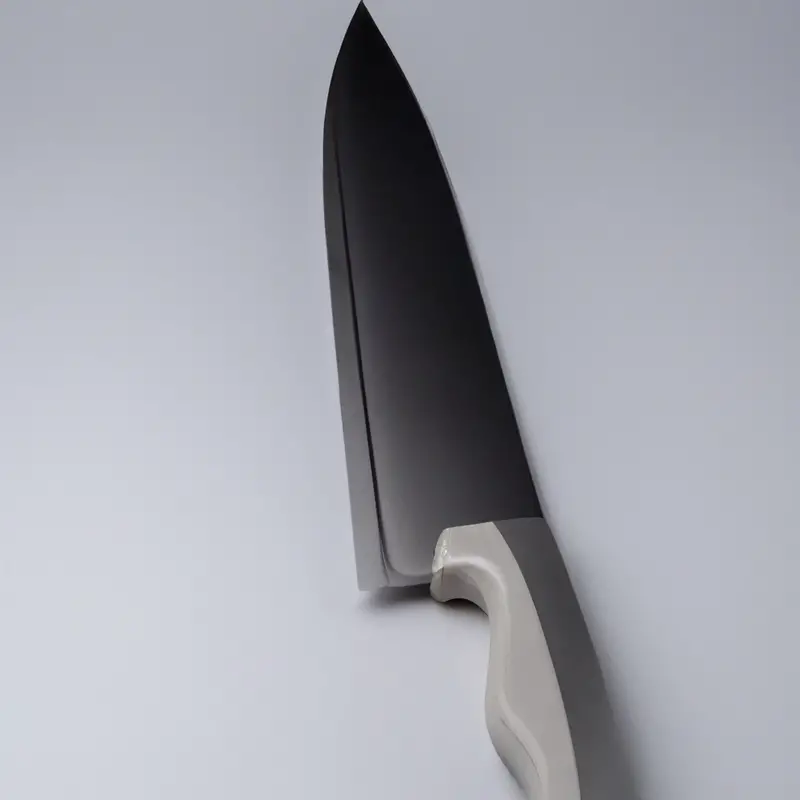
Understanding the importance of proper Santoku knife storage
Proper storage of Santoku knives is crucial to maintain their sharpness and longevity. Storing them improperly can lead to blade damage and reduced performance.
It is essential to clean the knives thoroughly before storage to avoid corrosion and rust.
Using a knife sheath or a knife block is an efficient way of storing Santoku knives safely. A magnetic strip can also be used, but caution should be taken not to scratch the blades.
Humidity and temperature should be considered during storage to prevent damage to the knives.
Overall, storing Santoku knives properly ensures that they remain in optimal condition and are ready for use when needed.
Avoiding common mistakes that lead to blade damage
To prevent damaging your Santoku knife’s blade while storing, avoid the following common mistakes:
- Storing the knife with other utensils that can scratch or chip the blade.
- Exposing the knife to high humidity or dampness, which can lead to corrosion.
- Placing the knife in a way that the blade touches the surface or other objects, causing dulling, warping, or even chipping.
- Storing the knife in a way that it can collide with other utensils when removing it from its storage place.
- Using a knife sheath that isn’t properly fitted to the blade, as it can scratch or damage the blade’s surface.
- Storing the knife while it’s still dirty or wet, leading to rust, corrosion, or staining.
By avoiding these common mistakes, you can prolong your Santoku knife’s life and maintain its sharpness and edge for an extended period.
Optimal materials for Santoku knife storage: wood, stainless steel, or magnetic strip?
When it comes to the optimal materials for Santoku knife storage, the three most common options are wood, stainless steel, and magnetic strips. Wooden knife blocks are aesthetically pleasing and can protect the blade from damage, but they require regular cleaning to prevent bacteria buildup.
Stainless steel knife blocks are durable and easy to clean, but may scratch the blade if not lined with a non-abrasive material.
Magnetic strips are space-efficient and prevent scratches on the blade, but may not be suitable for knives with high carbon content as they can be magnetized. Ultimately, the choice of storage material depends on personal preference and the type of Santoku knife being stored.
How to clean your Santoku knife before storage
To clean your Santoku knife before storage, first, rinse it with warm water and mild soap. Make sure to remove any food buildup, stains, or debris from the blade gently.
Dry the knife thoroughly with a clean towel, making sure to remove any moisture from the blade and handle.
You can also use a paper towel or a cloth to wipe the blade. Avoid using abrasive materials, harsh detergents, or soaking the knife in water.
This may damage the blade finish or the handle.
Once the knife is dry, store it in a safe and dry place. Never put a wet or damp knife into storage.
Proper cleaning and drying help prevent rust, corrosion, or discoloration of the blade, and ensure the knife remains sharp for long.
How to use a knife sheath for Santoku knives
Using a knife sheath for Santoku knives is a simple yet effective way of protecting the blade and preventing accidents. To use a sheath, slide the blade into the sheath carefully, making sure the entire cutting edge is covered.
The sheath should fit snugly around the blade without putting too much pressure, which could cause damage to the cutting edge.
It is important to keep the sheath clean and dry to prevent moisture from getting trapped inside, which can lead to rust and corrosion. After use, wipe the blade and sheath with a clean, dry cloth before storing it away.
When storing your Santoku knife in a sheath, it’s important to choose a sheath that fits the size of your knife.
Using a sheath that is too large or small can leave the blade exposed or cause it to rattle around inside the sheath, which can damage the knife. Overall, a knife sheath serves as an excellent tool in protecting your Santoku knife, and with proper use and storage, can help to maintain the sharpness and longevity of the blade.
How to safely store Santoku knives in a knife block
One of the best ways to safely store a Santoku knife is to use a knife block. When storing in a knife block, make sure the slots are wide enough to accommodate the blade and avoid overcrowding.
Additionally, always insert the knife into the block with the blade facing down to prevent accidental cuts.
Avoid storing the knife block in areas with high humidity or direct sunlight, as it can cause the wood to warp or the metal to rust. Furthermore, cleanliness is crucial when using a knife block, so make sure to wipe the blade dry and free of any food debris before storage.
How to correctly position Santoku knives in a knife roll for storage
When storing Santoku knives in a knife roll, it’s important to position them correctly to avoid blade damage. The recommended way is to first lay the knife flat on the roll with the edge facing up.
Then, gently fold the blade over and tuck the handle into the designated slot.
Repeat with each knife, ensuring they are not touching each other to avoid scratches or chips. It’s also important to make sure the roll is stored in a dry place with consistent temperature and humidity levels to prevent corrosion.
By following these simple steps, you can keep your Santoku knives in good condition for years to come.
The role of honing and sharpening in Santoku knife maintenance
The role of honing and sharpening is to maintain the sharpness and effectiveness of the Santoku knife. Honing is the process of realigning the knife’s edge, while sharpening is the removal of metal to create a new edge.
Honing should be done regularly, while sharpening depends on the frequency of use.
The honing steel that comes with the knife can be used for honing. Hold the knife at a 20-degree angle and draw it down the steel from base to tip.
Repeat this process on the other side of the blade.
However, honing won’t sharpen a dull blade. Sharpening, on the other hand, requires a sharpening stone or kit.
It’s recommended to use a coarse grit stone first and then a fine grit stone to create a new edge.
Make sure to follow the instructions as different stones require different methods. Regular honing and sharpening not only maintain the knife’s sharpness but also extend its lifespan.
A dull blade requires more force to cut through food, leading to potential accidents and damage to the blade.
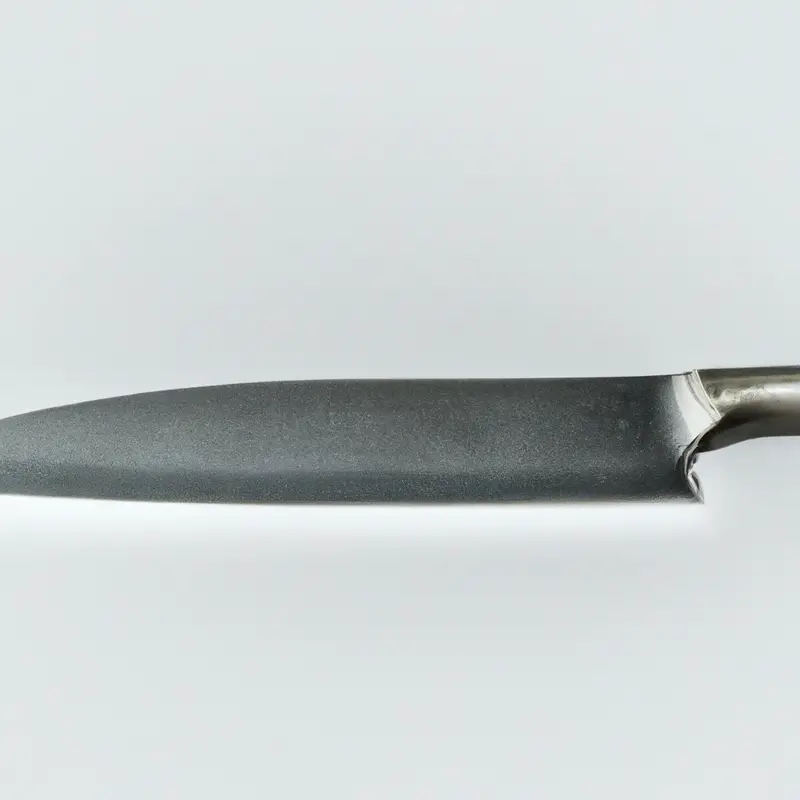
The consequences of improper Santoku knife storage
Improper Santoku knife storage can have detrimental consequences on the blade’s edge and overall performance. Storing knives in a drawer or with other utensils can lead to the blade rubbing against other objects, causing chips, nicks, and dulled edges.
Exposure to moisture can also cause rust and corrosion, resulting in irreversible damage to the knife.
Additionally, storing the knife improperly can lead to safety hazards, including accidental cuts and injuries. Therefore, it is essential to invest in proper storage methods, such as a knife block, magnetic strip, or sheath to ensure the longevity and optimal performance of your Santoku knife.
Other factors to consider when storing Santoku knives: humidity and temperature
Humidity and temperature are crucial factors to take into account when storing Santoku knives. High levels of humidity can lead to rust and corrosion on the blade, resulting in decreased performance and even damage.
Therefore, it is important to store Santoku knives in a dry environment, away from moisture, and in well-ventilated areas.
Temperature is also a key factor to consider, as drastic changes in temperature can cause the blade to expand or contract, leading to misalignment. It is crucial to store the Santoku knife in a cool, dry place, away from direct sunlight or heat sources, which can cause the blade to warp or bend.
Ideally, store the Santoku knife in a storage unit with a constant temperature, avoiding extreme temperatures or frequently changing temperatures.
It is recommended to protect the knife from sudden temperature changes and avoid rapid cooling or heating as it can damage the blade. Considering these factors is important in maintaining the quality and longevity of your Santoku knives.
Proper storage conditions will preserve the sharpness and performance of the blade and prevent damage to the knife, ensuring its durability for years to come.
Final Verdict
Proper Santoku knife storage is essential for maintaining the longevity and sharpness of the blade. By avoiding common mistakes and utilizing the optimal storage materials such as wood, stainless steel, or magnetic strips, you can ensure that your Santoku knife remains in excellent condition.
Moreover, cleaning the knife before storage, using a knife sheath, knife block, or knife roll and honing and sharpening the blade appropriately all play vital roles in maintaining the Santoku knife’s blade’s integrity.
Don’t forget the other factors to consider like humidity and temperature that may affect the blade’s quality. Ultimately, investing in proper Santoku knife storage techniques will not only improve your cooking experience but also increase the knife’s lifespan.
By implementing the tips and tricks discussed in this article, you can become a Santoku knife storage expert and take pride in your ability to maintain one of the most essential tools in your kitchen arsenal.
Remember, effective Santoku knife storage ensures peak performance and longevity, bolstering both your cooking abilities and kitchen confidence.

